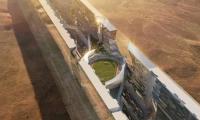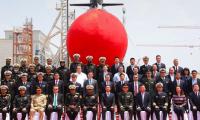Rawalpindi:Less crowded, clear, and motorist-friendly roads have just been a mirage for Rawalpindi residents. Every inch of the city’s unbelievably poor roads is flooded with private vehicles of every kind. Still, the traffic planners have remained indifferent to the idea of a better public transport system and are not really up to the challenge.
“The city fathers transport plan is not based on limiting the free growth of private vehicles. Nobody is thinking of implementing this initiative. It is still only an abstract occasional slogan, as hundreds of vehicles are added to the city’s roads every day,” says Saleem Hussain, a taxation officer.
“As the city fathers’ promises are termed untrustworthy, and the vehicle sellers and buyers are infamously disobedient, there is virtually no chance for a smooth and efficient public transport system to take shape,” adds Saleem.
“Rawalpindi’s bane has been the lack of a decent, proper system of public transport, Suzukis and wagons are no substitute for spacious buses like Waran, which once provided a breather. There is a need for balancing the existing transport system,” says Moharram Ali, a public transport user.
“Escalating vehicular population has severely strained the road infrastructure triggering traffic congestion of uncontrollable level, and in the process affecting our physical, mental and psychological health,” says Zaheer Abbas, a policeman.
“The city’s unbearable public transport system has failed to satisfy the traveling public, resulting in a sea of private vehicles. The public prefers private vehicles because they are comfortable,” says Zulqarnain Haider, a traffic guy, weary of his routine duty.
“Pindiites have been forced to use private transport since daily travel in taxis doesn’t come cheap. Even wagons and Suzukis are not a good option if you have to change many routes to get to your destination,” says Waheed-ul-Hasan, a corporate sector employee.
“Before buying a car I had to walk almost a kilometer to get to the bus stand to board a bus to Islamabad. Again, I had to walk a fair bit from the dismounting point to reach my destination,” adds Waheed. “The issue of increasing private vehicles is there for all to observe. Rawalpindi appears to have more private vehicles than public vehicles. Although a fairly large part of the population uses public transport, I think that for the traffic situation to be healthy, a greater portion of the population must use public transport,” says Asif Rizvi, a shopkeeper.
“Where every initiative mostly remains an image-building exercise, people can’t be made to realize the importance of using public transport. Introduction of decent types of buses and not wagons and Suzukis to cater to different classes of people should be the initiative,” suggests Adeel Hussain, a social activist. Nabeel Zaidi says, “The authorities often rely on solutions that commuters find unscientific. The infrastructure too is not exactly world class.”
Online E-Kachehri in progress on issues relating to property matters in sectoral areas of Islamabad. —...
The National Press Club building in Islamabad. — Facebook/group/npcnews/Islamabad: In a significant address at the...
The Sustainable Social Development Organisation and All Neighbors USA organised the International Religious Freedom...
Provincial Transport Minister Bilal Akbar Khan seen in this image on March 11, 2024. — Facebook/Bilal Akbar Khan...
The image released on Oct 20, 2023 shows Dr Moonis Ahmar giving a lecture. — Facebook/moonis.ahmarIslamabad: Dr...
India Study Centre at the Institute of Strategic Studies Islamabad organized an in-house session on the on-going...







